Do you have a recipe that calls for borlotti beans but wants to avoid going to the store? Don’t worry, we’ve got you covered!
Borlotti beans are only sometimes easy to find and often expensive when you locate them.
Thankfully, plenty of delicious alternatives provide very similar flavor profiles and textures.
In this post, we’ll look at some of the best options to substitute for borlotti beans so you can easily adapt your favorite recipes without compromising taste or quality!
What Are Borlotti Beans?
Borlotti beans, also known as cranberry beans, are a type of legume native to Italy.
They are similar in size and shape to kidney beans but have a unique flavor and texture.
The beans have a reddish-brown color with streaks of white or pink running throughout.
These beans are popular in Italian cuisine and can be used in various dishes.
They are often used to make soups, stews, and pasta sauces.
Borlotti beans can also be added to salads for extra flavor or to accompany roasted vegetables.
In some parts of Italy, they are boiled and served with olive oil and herbs for a light meal.
Borlotti beans are a great source of protein, fiber, and complex carbohydrates.
They are also high in vitamins and minerals such as zinc, iron, magnesium, and folate.
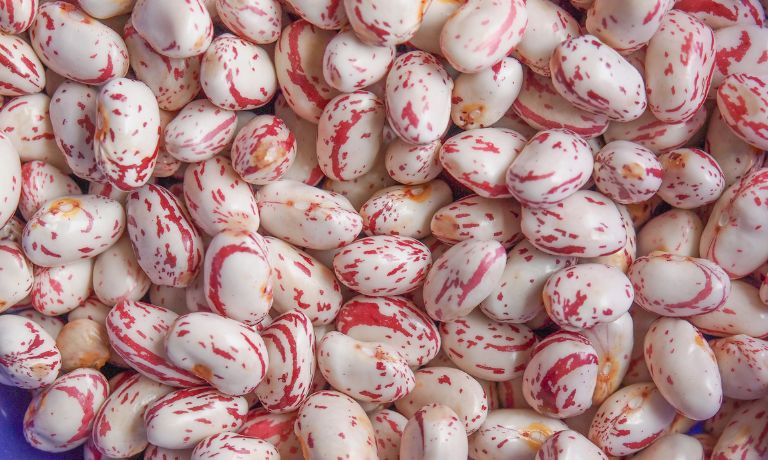
Substitutes For Borlotti Beans
Several substitutes can be replaced if you cannot find Borlotti beans in your local grocery store.
Chickpeas
Chickpeas, also known as garbanzo beans, are a legume native to the Middle East and India.
They have an earthy flavor and a creamy texture when cooked.
Chickpeas are a great source of protein and dietary fiber, making them a popular choice for vegetarian dishes.
Chickpeas can be used in various dishes, from soups and stews to salads and curries.
They can also be mashed into hummus or roasted for snacking.
Roasted chickpeas are particularly popular as a crunchy alternative to popcorn.
Chickpea flour is also widely used in baking, providing a gluten-free option for cakes and bread.
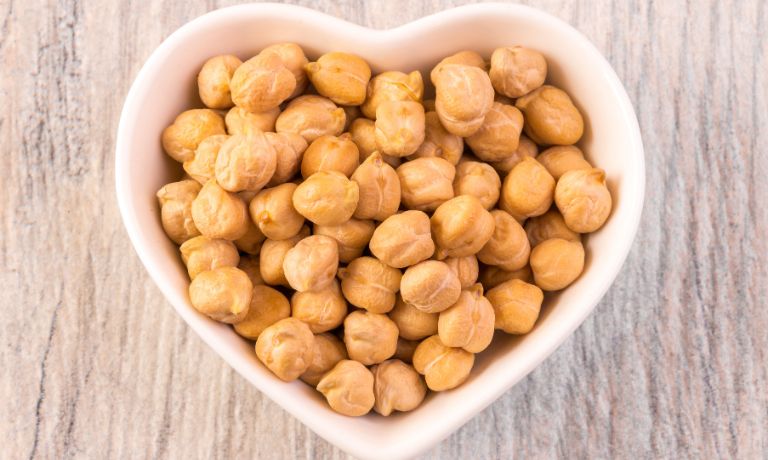
Lentils
Lentils are a great substitute for Borlotti beans, as they have a similar flavor and texture.
Lentils are small, round legumes typically grown in India and the Middle East.
They come in various colors such as yellow, green, red, and black.
Lentils are a great source of plant-based protein, dietary fiber, and complex carbohydrates.
Lentils can be used in soups, stews, salads and as an alternative to rice or pasta.
They can also be ground into flour for baking or pureed for sauces or dips.
They are also incredibly affordable, making them a great choice for budget-conscious meal planning.

Anasazi Beans
Anasazi beans are a type of small, oval-shaped bean that originated in the southwestern United States.
Native Americans and early settlers called them “the miraculous bean” because of their drought resistance and staying power through long journeys.
Anasazi beans are popular for traditional dishes such as posole, chilies, and refried beans.
They also make an excellent addition to soups, salads, and stews.
Anasazi beans have a tender texture when cooked and a mild flavor that pairs nicely with many herbs and spices.
They are high in protein, fiber, iron, zinc, folate, and other essential minerals for healthy living.
Because of their hearty nature and nutritional value, Anasazi beans are ideal for those looking to add a nutritious and flavorful option to their diets.
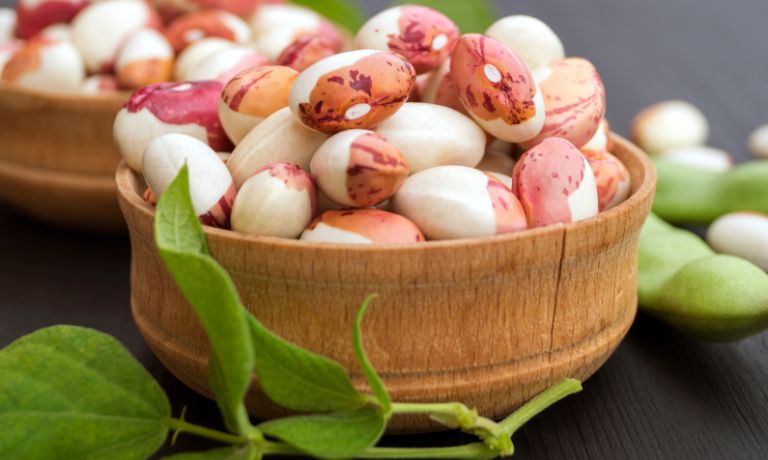
Cannellini Beans
Cannellini beans are often used to substitute for Borlotti beans, as they have a similar texture and flavor.
Cannellini beans, also known as white kidney beans, are a type of legume and part of the wider family of Phaseolus vulgaris.
They have a mild flavor and creamy texture, making them an ideal ingredient for soups, stews, pasta dishes and salads.
Their white color is very appealing when added to many dishes.
Cannellini beans are a great protein and dietary fiber source, containing many essential vitamins and minerals.
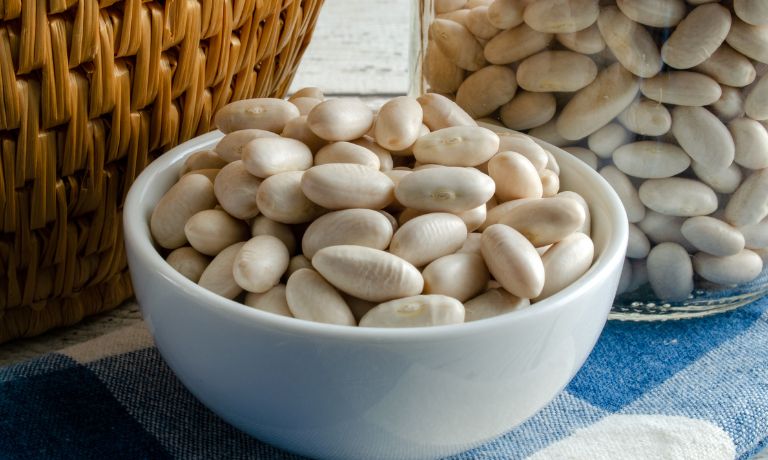
Lupini Beans
Lupini beans are a type of legume native to the Mediterranean region.
They have been cultivated for centuries, and today they are most commonly found in Italian cuisine.
Lupini beans have a nutty flavor and a chewy texture, making them an ideal addition to salads, soups, stews, casseroles, and pasta dishes.
The beans can also be eaten as a snack or pickled and served with bread.
Lupini beans are full of nutrients such as fiber, protein, iron, and vitamins B1 and B6.
They can be purchased either dried or canned; however, they should always be soaked for several hours before cooking.
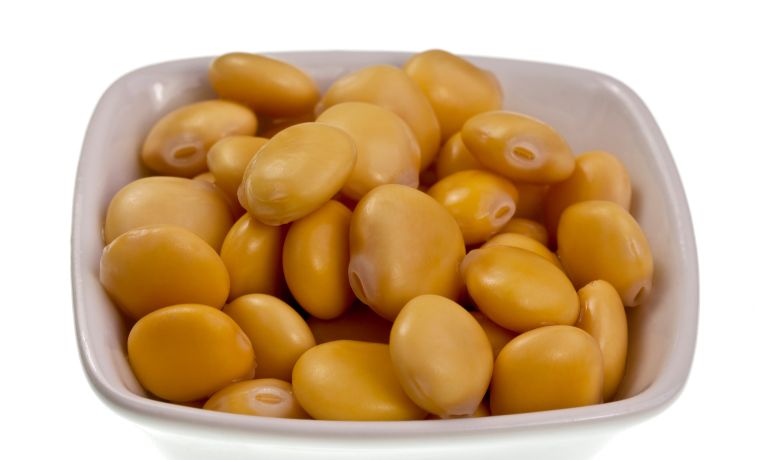
Navy Beans
Navy beans, or haricot, pea or Boston beans, are small, white-colored beans often found in stews and soups.
They have a mild flavor and smooth texture with low-fat content.
Navy beans are among the most frequently used pulses in the United States and can be found in many grocery stores.
They are also well-known in other parts of the world, including Europe and Asia.
Navy beans can be soaked overnight and served as a side dish or added to soups, stews, salads, casseroles, and chili.
Navy bean soup is one of the most popular dishes featuring this legume.
Additionally, navy beans are often cooked with vegetables, herbs, and spices to make a flavorful dish.
Navy beans can also be used as the base for dips, spreads, and hummus.
Finally, they can be ground into flour and used in baking recipes like muffins or bread.
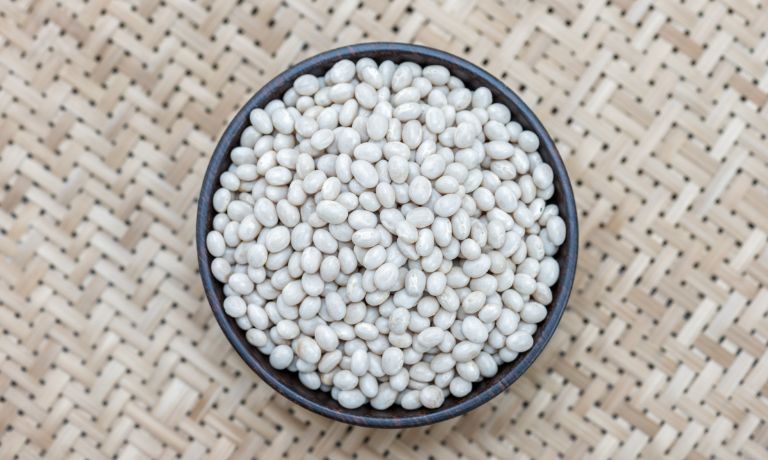
Pinto Beans
Pinto beans are a variety of common beans (Phaseolus vulgaris) widely popular in Mexican cuisine and Southwestern US dishes.
The name “pinto” means “painted” in Spanish, referring to the mottled light yellow and reddish-brown color of the beans’ outer shells.
Pinto beans are highly versatile and can be used in various dishes, including soups, refried beans, burritos, tacos, and more.
They are also used to make frijoles refritos (refried beans), a popular Mexican dish.
Pinto beans contain many essential nutrients such as protein, fiber, complex carbohydrates, iron, potassium and magnesium.
They can be prepared in various cooking methods such as boiling, slow-cooking, baking and frying.
Pinto beans are great for those looking to increase their fiber intake and add more plant-based proteins to their diet.
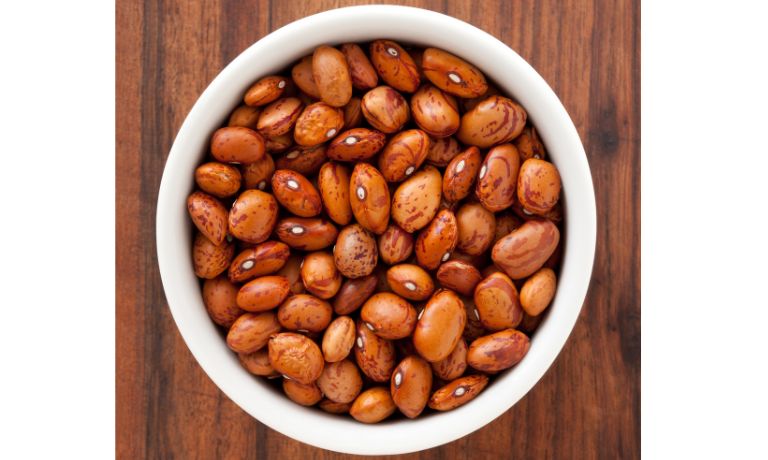
FAQs
Can You Replace Borlotti Beans With Chickpeas?
Yes, you can replace borlotti beans with chickpeas in most recipes.
The texture and flavor of the dish may be slightly different than if using borlotti beans, but it will still be tasty.
Can Black Beans Replace Borlotti Beans?
In most recipes, black beans can be used as a substitute for borlotti beans.
The flavor of both beans is similar, but black beans are slightly sweeter and have a smoother texture.
Are Borlotti Beans Similar To Kidney Beans?
Borlotti beans, or cranberry beans, are related to kidney beans but have a slightly different flavor and texture.
When cooked, they are larger than most kidney beans and have a creamy, starchy texture.
Conclusion
Borlotti beans are a type of Italian bean with a creamy texture and nutty flavor.
They can be used in various dishes, including soups, stews, salads, and casseroles.
However, Borlotti beans can sometimes be difficult to find or take too long to cook for time-sensitive recipes.
Fortunately, there are several good options to substitute for Borlotti beans that can bring similar flavors and textures to your dishes.
Some of the best substitutes include Cannellini beans, Lupini beans, Navy beans, and Pinto beans.
Each of these beans has a unique flavor and texture that will bring something new to your dishes.

